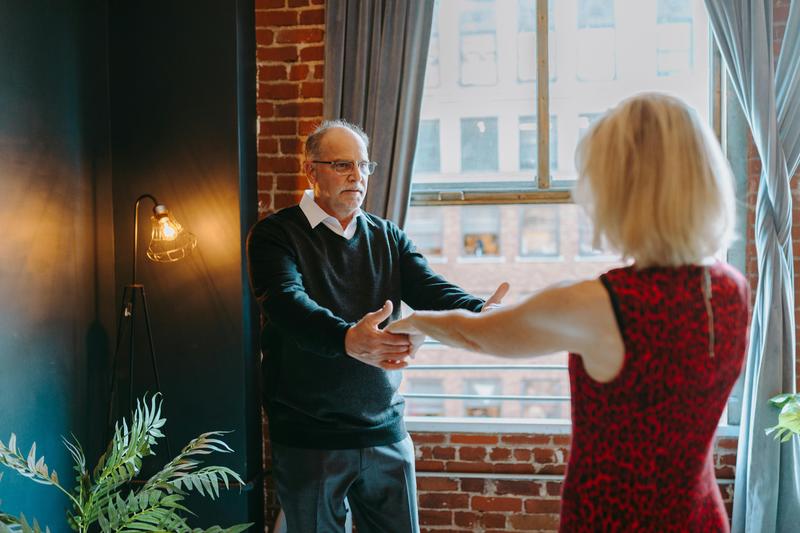It’s Not About The Dirty Dishes
You’ve probably had this thought at some point. Maybe it was in the middle of a disagreement, or while staring at your partner across the dinner table in silence, or even when you found yourself annoyed by something that once made you smile. Relationships—especially romantic ones—are complex. They intertwine with every aspect of life: where you live, how you spend your time, even how you think about yourself.
In my coaching, relationships come up constantly. All kinds—family, friendships, work relationships. But the one that carries the most weight? Romantic relationships. Why? Because they take up the most real estate in your daily life. They can be a source of deep fulfillment or the most exhausting challenge.
So today, we’re going to focus on that dynamic. What makes long-term relationships thrive? Why do some couples feel deeply connected while others drift apart? And what really lies beneath the surface of those recurring frustrations?
The Myth of “Happily Ever After”
You’ve seen it in movies. Two people fall in love, overcome a challenge, and then… cut to the credits. We’re left assuming they ride off into the sunset, madly in love forever. But anyone in a long-term relationship knows—it doesn’t work that way.
At first, the connection is effortless. You’re drawn to each other, fascinated by every detail. You love how she’s spontaneous, or how he always has a plan. You crave their presence, their attention, their touch. It’s intoxicating. And then? Time passes. Life settles in. The habits that once seemed charming now irritate you.
That “carefree spirit” now looks like irresponsibility. That structured, organized personality now feels rigid and boring.
And this is where so many people hit a wall. They assume something’s gone wrong. They start to question if they’re with the right person.
But here’s the truth: The shift from infatuation to reality isn’t a sign that something is broken. It’s a sign that the real relationship is beginning.
What’s Actually Causing the Struggle?
When couples hit challenges, they often point to the surface-level issues: He leaves dishes in the sink. She’s always on her phone. He doesn’t plan enough date nights. She’s not as affectionate as she used to be.
But these aren’t the real problems.
The real issue? Misalignment.
Not alignment in the sense of agreeing on everything or never arguing. Alignment in the deeper sense—are we still on the same journey? Do we still want the same things? Are we still moving toward a shared future?
The most connected couples don’t avoid conflict. They don’t even have all the same preferences. But they have one essential thing: a shared vision for their lives.
Think about it: If you want to live in a quiet town with a big backyard, and your partner dreams of a high-rise in the city, that’s not a minor preference—that’s a core difference. If one person values financial freedom while the other spends money recklessly, that’s not just a spending habit—it’s a fundamental divide.
And if you’re out of sync in the big-picture areas of life, the small annoyances will start to feel unbearable. But the reverse is also true: When you’re in alignment on what really matters, you’ll find yourself more patient, more understanding, and more willing to work through the everyday challenges.
The Three Guiding Questions for Relationship Longevity
1. How are we being together?
It’s not about avoiding life’s stressors; it’s about how you show up emotionally in the relationship. Are you present? Are you emotionally engaged? That’s the "being" part.
2. What are we doing together?
Shared experiences—whether it’s a weekly hike, trying new recipes, or evening walks—build memories, deepen the bond, and create rituals that strengthen the relationship.
3. What do we have together?
Strong couples cultivate shared goals, dreams, and a life they co-create, not just material possessions.
These questions aren’t just for couples who are struggling. They’re for anyone who wants to consciously shape their relationship instead of just reacting to whatever happens over time.
Keep Asking, Keep Choosing
The strongest relationships aren’t built on a perfect match. They’re built on conscious choice—again and again.
People change. Goals shift. Life happens. The question isn’t if you and your partner will change—it’s whether you’ll continue choosing each other as you do.
And that choice is easier when you’re aligned—not just in love, but in vision, values, and the future you’re creating together.
If you’re ready to dive deeper into this kind of self-awareness, the Inner Foundation Series is designed to help you train the emotional intelligence, clarity, and vision needed to create deeply fulfilling relationships—starting with the relationship you have with yourself.
Because when you have that foundation, every other relationship—including the most important one—can thrive.

